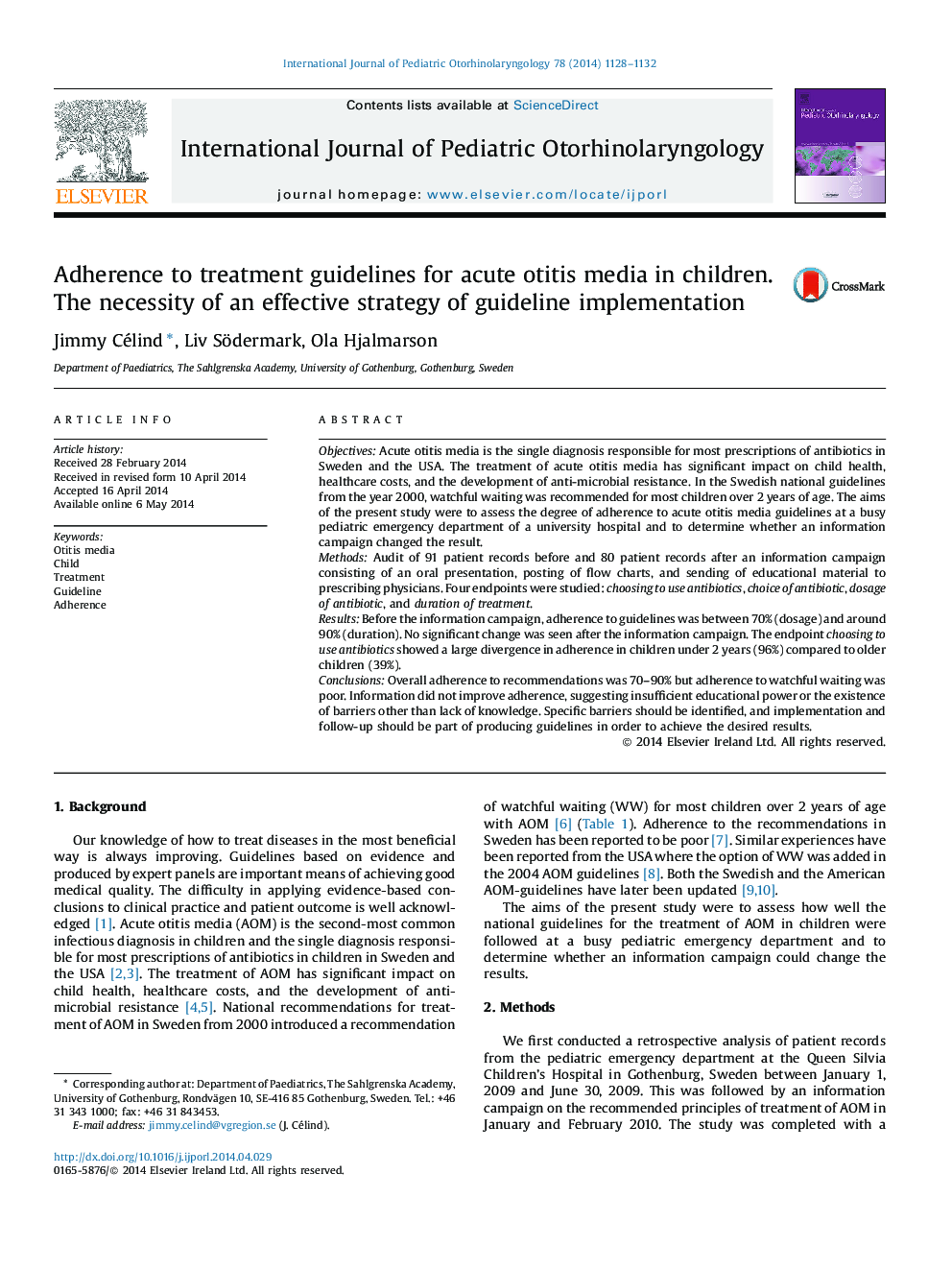| Article ID | Journal | Published Year | Pages | File Type |
|---|---|---|---|---|
| 4112577 | International Journal of Pediatric Otorhinolaryngology | 2014 | 5 Pages |
ObjectivesAcute otitis media is the single diagnosis responsible for most prescriptions of antibiotics in Sweden and the USA. The treatment of acute otitis media has significant impact on child health, healthcare costs, and the development of anti-microbial resistance. In the Swedish national guidelines from the year 2000, watchful waiting was recommended for most children over 2 years of age. The aims of the present study were to assess the degree of adherence to acute otitis media guidelines at a busy pediatric emergency department of a university hospital and to determine whether an information campaign changed the result.MethodsAudit of 91 patient records before and 80 patient records after an information campaign consisting of an oral presentation, posting of flow charts, and sending of educational material to prescribing physicians. Four endpoints were studied: choosing to use antibiotics, choice of antibiotic, dosage of antibiotic, and duration of treatment.ResultsBefore the information campaign, adherence to guidelines was between 70% (dosage) and around 90% (duration). No significant change was seen after the information campaign. The endpoint choosing to use antibiotics showed a large divergence in adherence in children under 2 years (96%) compared to older children (39%).ConclusionsOverall adherence to recommendations was 70–90% but adherence to watchful waiting was poor. Information did not improve adherence, suggesting insufficient educational power or the existence of barriers other than lack of knowledge. Specific barriers should be identified, and implementation and follow-up should be part of producing guidelines in order to achieve the desired results.
